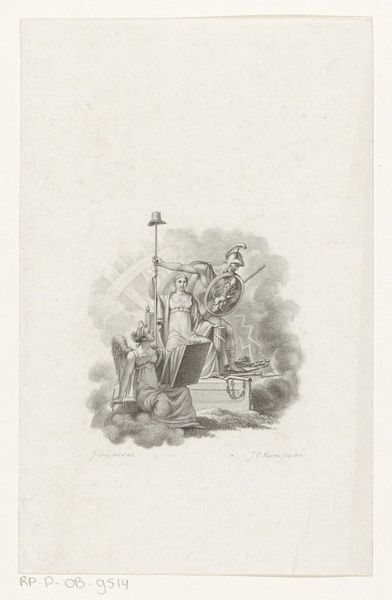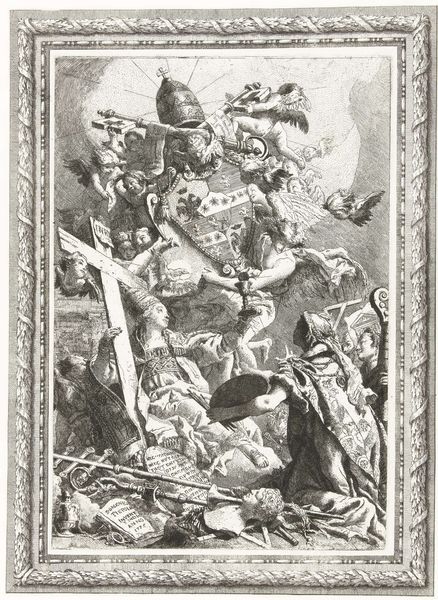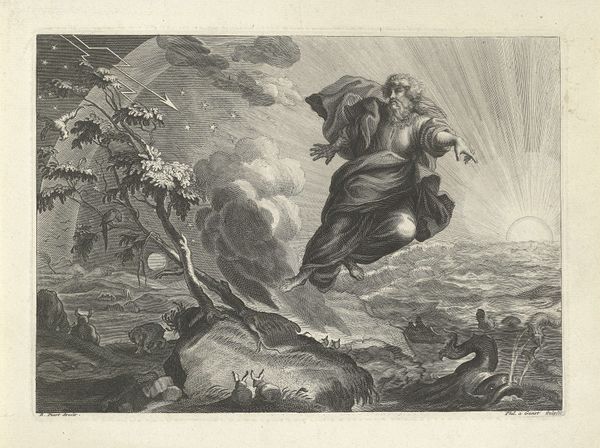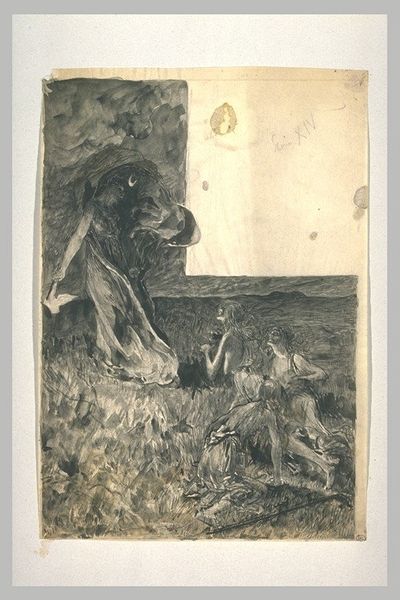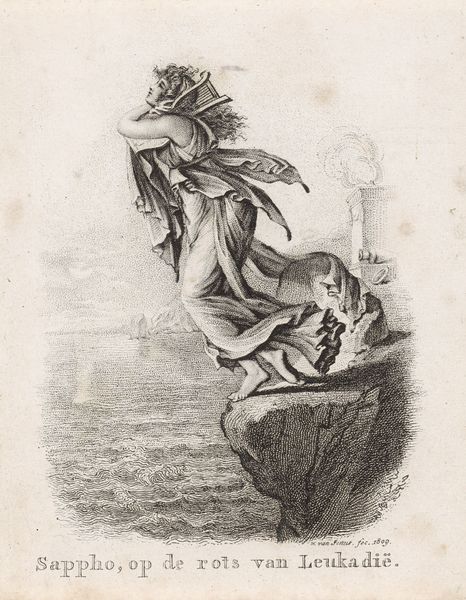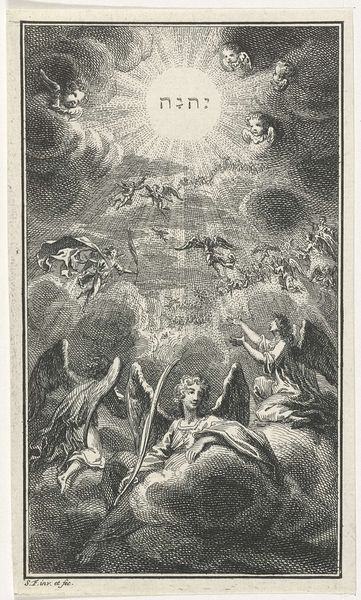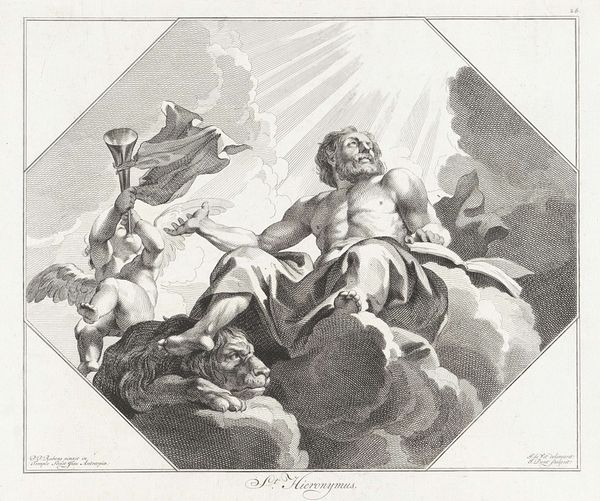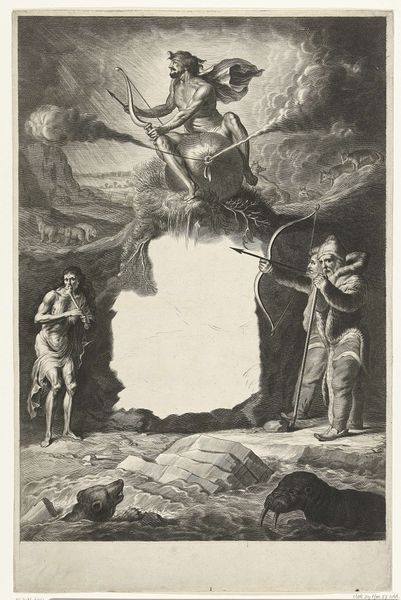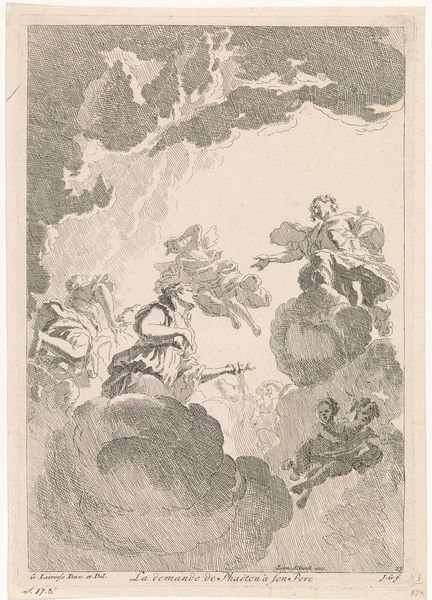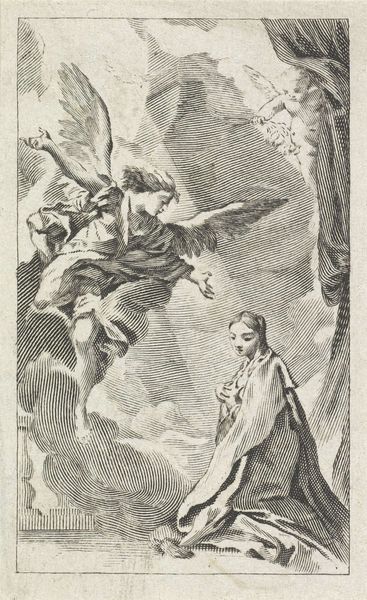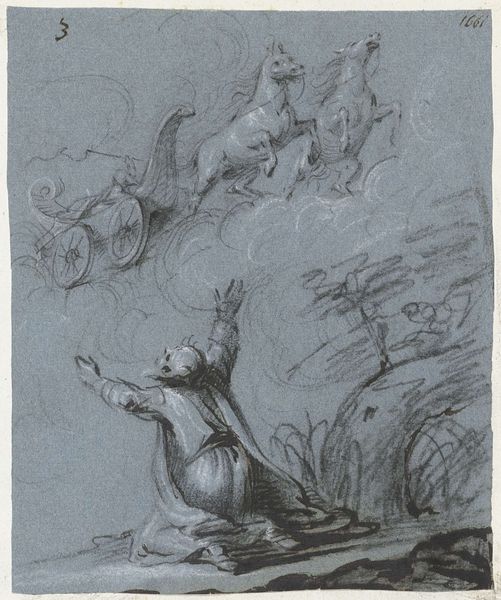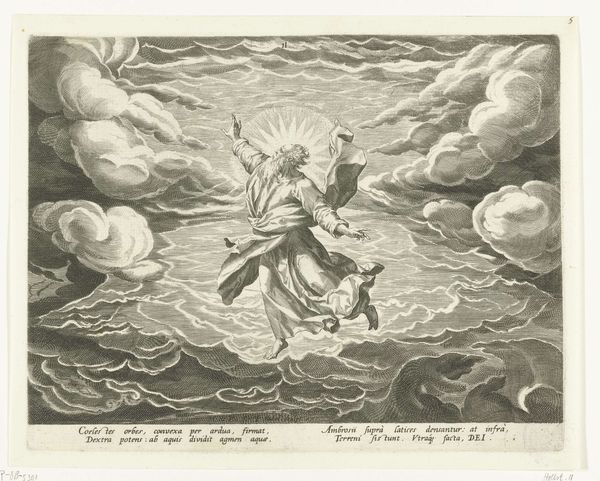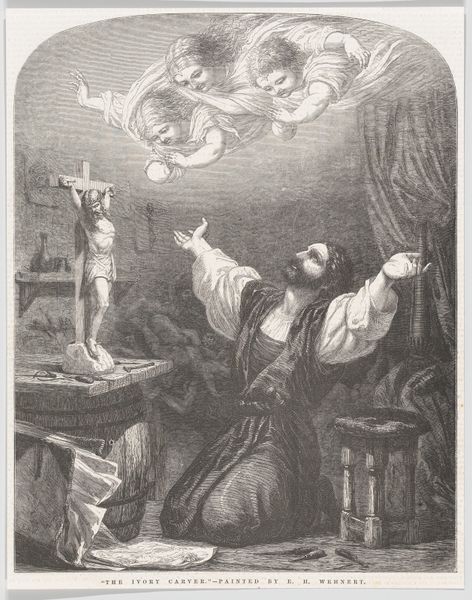
Allegorie op de alliantie gesloten tussen de roomse klerikale partij en de liberale partij tegen de Nederlandse regering, 1829 1829
0:00
0:00
print, engraving
#
allegory
# print
#
romanticism
#
engraving
Dimensions: height 405 mm, width 285 mm
Copyright: Rijks Museum: Open Domain
This allegory, conceived in 1829 by Eugène Verboeckhoven, presents a complex political landscape through potent symbols. A Belgian Lion stands defiantly beside a pillar inscribed with “Belgium Foederatum,” while an angel descends from above, bearing a laurel wreath. A cross floats above her, glowing from the heavens. The lion, a symbol of strength and courage, here embodies the spirit of the Belgian people. Yet, this is no isolated representation. We find lions throughout history – from the Lion Gate of Mycenae to heraldic emblems of European monarchies. What is particularly striking is the angel figure, which can be found in Christian art. The angel is an expression of hope, here bestowing honor upon the Belgian cause. Note how the angel’s gesture – the offering of the wreath – evokes the classical motif of victory and divine favor. From ancient Greek sculptures to Renaissance paintings, this gesture transcends time, carrying layers of cultural memory. The image taps into our collective subconscious, stirring deep-seated emotions and associations related to power, liberation, and divine sanction. These symbols are not static; they evolve. The cross is a cyclical progression that resurfaces and takes on new meanings across historical contexts.
Comments
No comments
Be the first to comment and join the conversation on the ultimate creative platform.
